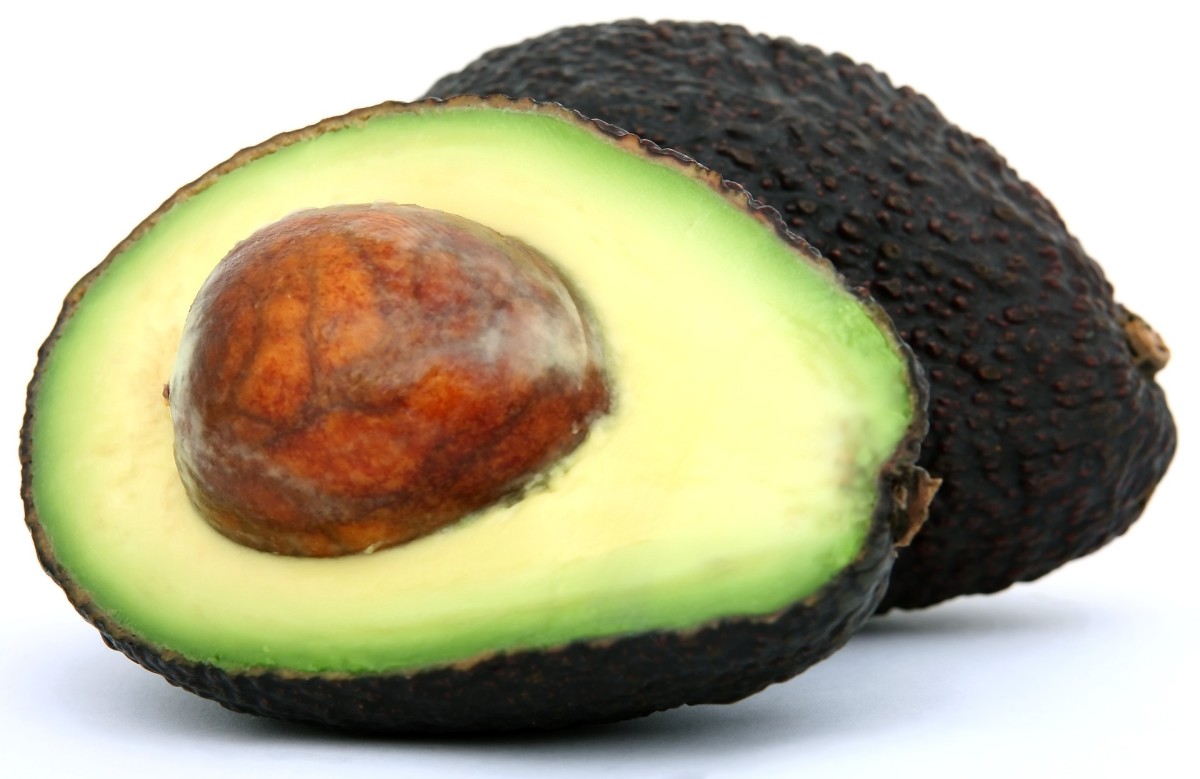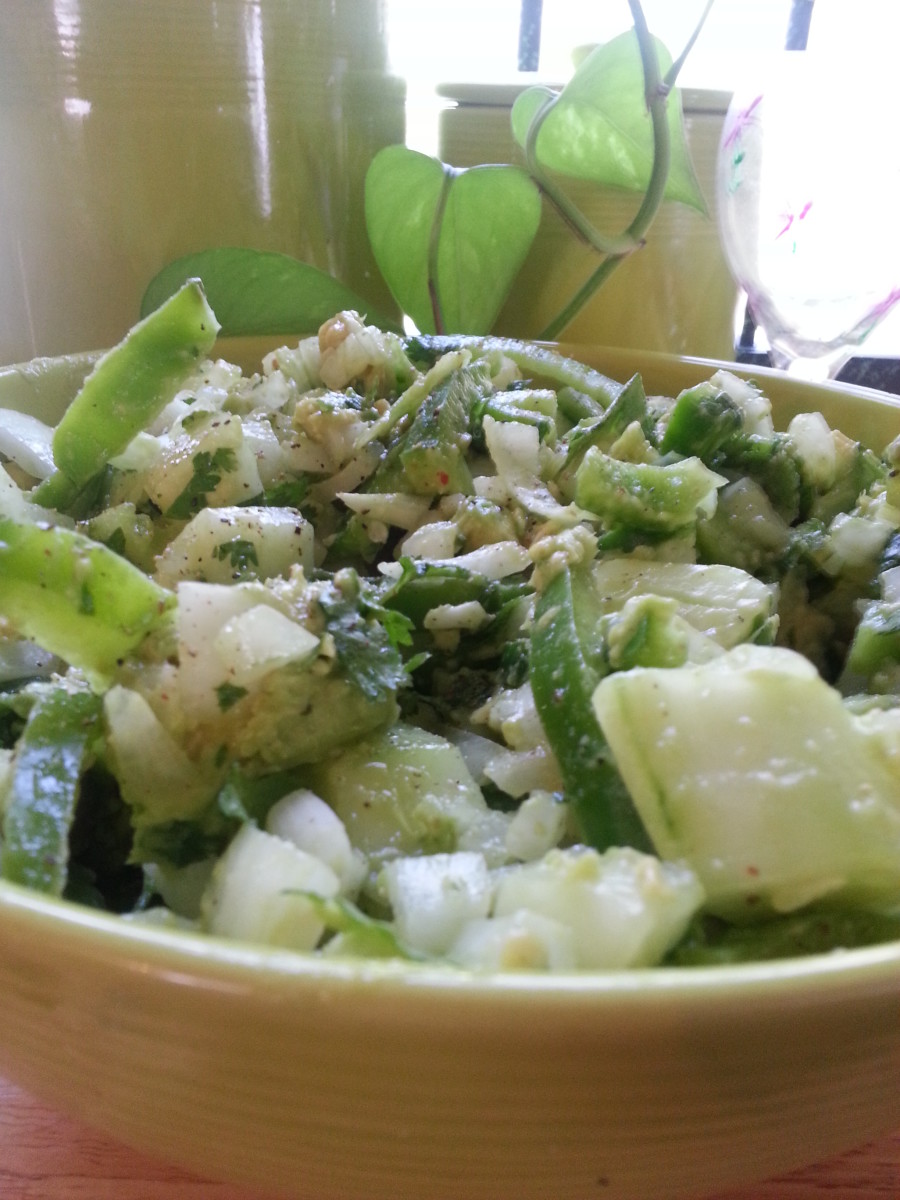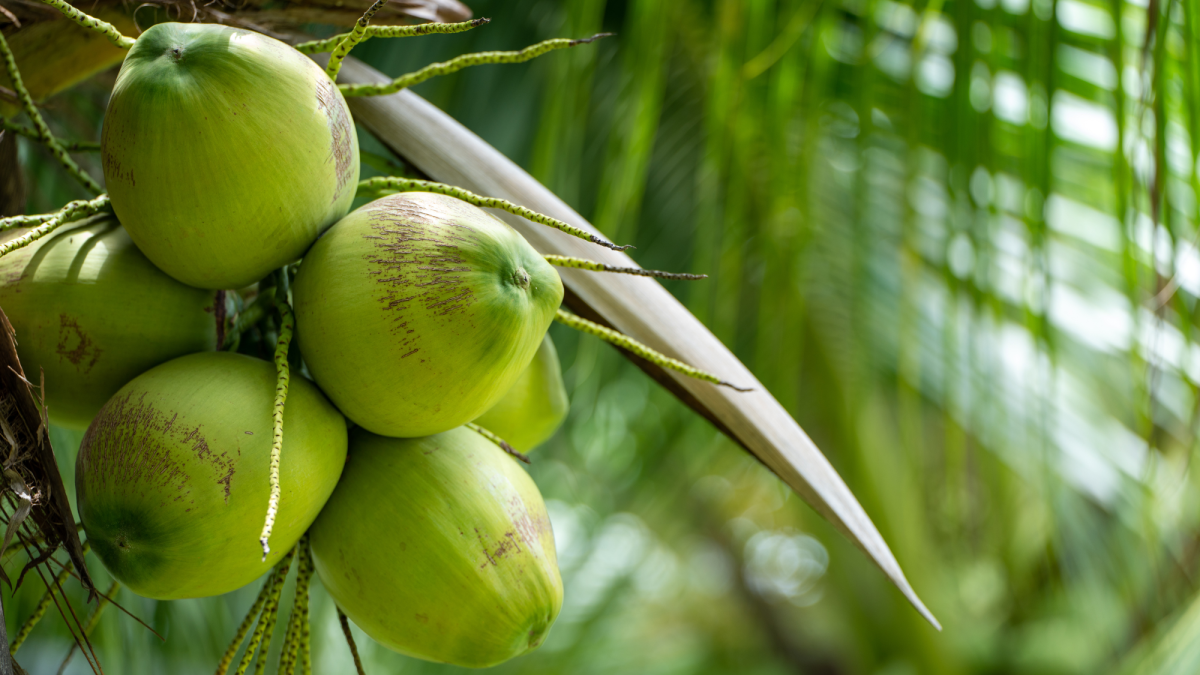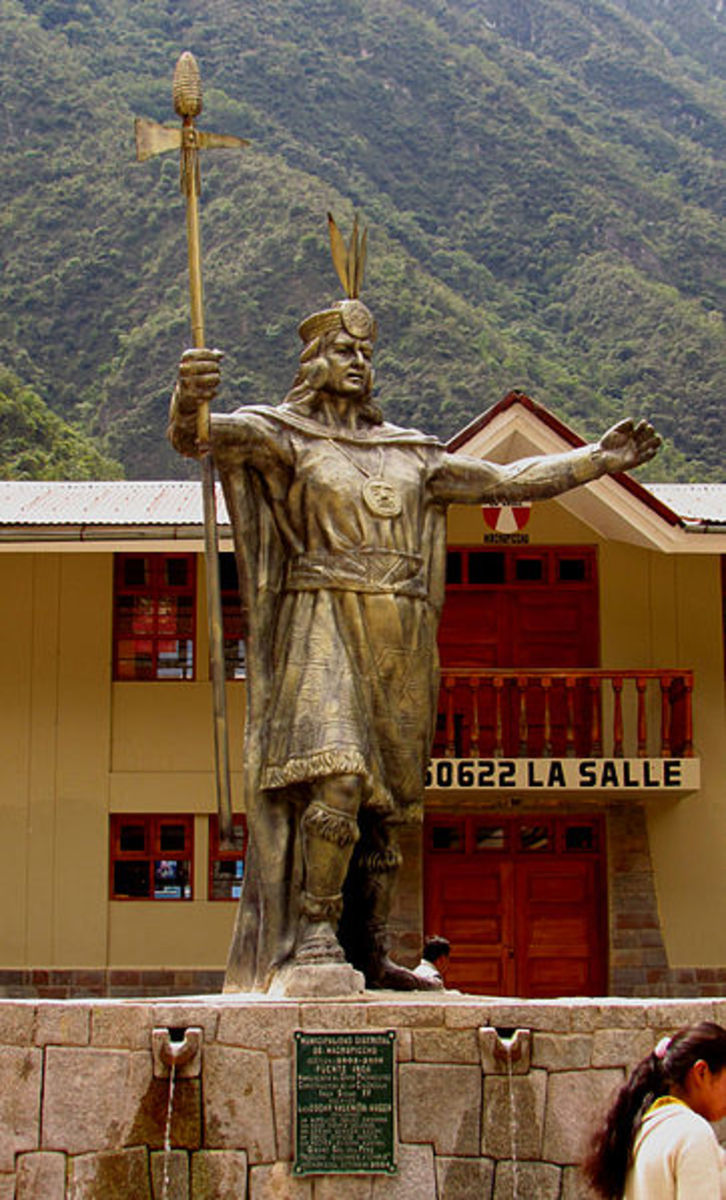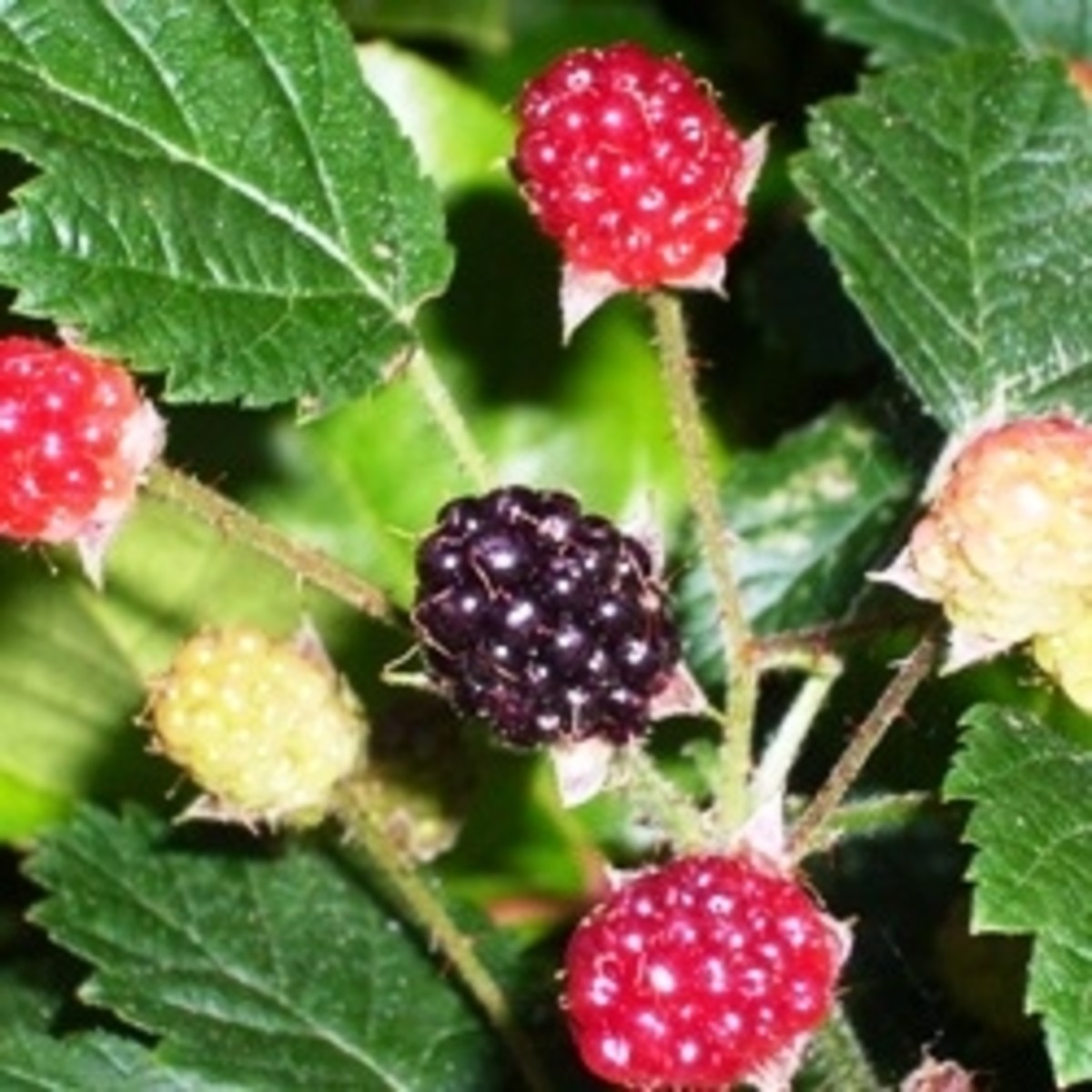- HubPages»
- Food and Cooking»
- Cooking Ingredients»
- Fruit Ingredients
Avocados Grow in The North
Avocado Location
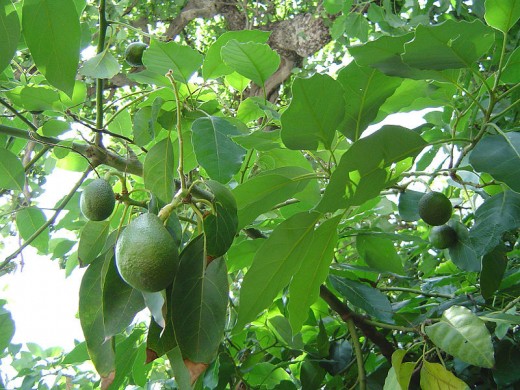

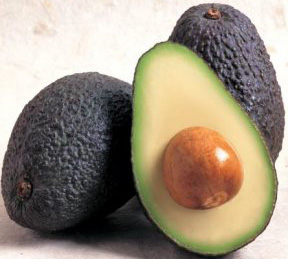
Avocados Grow in the North
Over two years ago (2006) Son Two's Father in Law (Alan) suggested that they should get involved in the Avocado Industry. He had been involved for many years successfully in the North area of The North Island of New Zealand. So the two of them left their Business on The Gold Coast in the safe hands of Son two's partner and went to new Zealand. For one month. They planted 800 trees on the farm next to Alan's Avocado Farm. He has a farm of some 1,500 trees. As his skill is highly rated by all the locals his Avocados are rated the highest in the District.
In 2007 Son two went back and planted another 700 trees and in October they are both going back to fill the last bit of ground up with perhaps another 200 trees. This will be the maximum that they can plant on that ground. Alan believes the farm next to them will be up for sale by then and he thinks he will get first call on the new property. Father and daughters and their spouses will buy jointly. This is back breaking work for one month and the money does not come until five years after the planting of the first lot of trees.
You might well ask what is an Avocado: -
Webster's New World Dictionary defines it
A wide spread, thick skinned pear-shaped tropical fruit, yellowish green to purplish black, with a single large seed and yellow buttery flesh.
Persea americana is the name of the laurel tree that it grows on. Strangely enough the next definition in the Dictionary is Avocation: - Something one does in addition to ones vocation or usual form of work. This would explain their activity for this five year period.
From Wikipedia, the free encyclopedia
Avocado, raw (edible parts)
Nutritional value per 100 g (3.5 oz)
Energy 160 kcal 670 kJ
Carbohydrates
8.53 g
- Sugars 0.66 g
- Dietary fiber 6.7 g
Fat
14.66 g
- saturated 2.13 g
- monounsaturated 9.80 g
- polyunsaturated 1.82 g
Protein
2 g
Thiamin (Vit. B1) 0.067 mg
5%
Riboflavin (Vit. B2) 0.130 mg
9%
Niacin (Vit. B3) 1.738 mg
12%
Pantothenic acid (B5) 1.389 mg
28%
Vitamin B6 0.257 mg
20%
Folate (Vit. B9) 81 μg
20%
Vitamin C 10 mg
17%
Calcium 12 mg
1%
Iron 0.55 mg
4%
Magnesium 29 mg
8%
Phosphorus 52 mg
7%
Potassium 485 mg
10%
Zinc 0.64 m
6%
Percentages are relative to US
recommendations for adults.
Source: USDA Nutrient database
classified in the flowering plant family Lauraceae. The name "avocado" also refers to the fruit of the tree with an egg-shaped pit. P. americana has a long history of being cultivated in Central and South America; a water jar shaped like an avocado, dating to A.D. 900, was discovered in the pre-Incan city of Chan Chan.[1]
The tree grows to 20 metres (65 ft), with alternately arranged leaves 12-25 centimetres long. The flowers are inconspicuous, greenish-yellow, 5-10 millimetres wide. The pear-shaped fruit is a true berry, from 7 to 20 centimetres long, weighs between 100 and 1000 grams, and has a large central seed, 5 - 6.4 centimetres long.[2]
An average avocado tree produces about 120 avocados annually. Commercial orchards produce an average of 7 tonnes per hectare each year, with some orchards achieving 20 tonnes per hectare.[3] Biennial bearing can be a problem, with heavy crops in one year being followed by poor yields the next. The fruit is sometimes called an avocado pear or alligator pear, due to its shape and rough green skin. The avocado tree does not tolerate freezing temperatures, and can be grown only in subtropical or tropical climates.
It's true that avocados are high in fat -- one reason they've earned the nickname "butter pear." A medium-sized avocado contains 30 grams of fat, as much as a quarter-pound burger. That's why diet experts have long urged Americans to go easy on avocados in favour of less fatty fruits and vegetables. But now nutritionists are taking another look. They're finding that most of the fat in an avocado is monounsaturated -- the "good" kind that actually lowers cholesterol levels. Thanks to this new understanding, the U.S. government recently revised its official nutrition guidelines to urge Americans to eat more avocados.
High in the Good Fat
The avocado's image first took on some polish with a 1996 study by researchers at the Instituto Mexicano del Seguro Social in Mexico (Archives of Medical Research, Winter 1996) that looked at the health benefits of daily avocado consumption. The 45 volunteers who ate avocados every day for a week experienced an average 17% drop in total blood cholesterol. Their cholesterol ratio also changed in a healthy way: Their levels of LDL (low-density lipoprotein, or "bad fat") and triglycerides, both associated with heart disease, went down. Their HDL (high-density lipoprotein, or "good fat") levels, which tend to lower the risk of heart disease, climbed.
Researchers have also discovered that avocados are rich in beta-sitosterol, a natural
The subtropical species needs a climate without frost and little wind. High winds reduce the humidity, dehydrate the flowers, and affect pollination. In particular, the West Indian race requires humidity and a tropical climate which is important in flowering. When mild frost does occur, the fruit drops from the tree, reducing the yield, although the cultivar Hass can tolerate temperatures down to -1°C. Contrary to the conventional wisdom, avocado trees cannot sustain the frost. Avocado farmers in California lost hundreds of millions of dollars in 2006 due to a temperature drop[citation needed]. The trees also need well aerated soils, ideally more than 1 m deep. Yield is reduced when the irrigation water is highly saline. These soil and climate conditions are met only in a few areas of the world, particularly in southern Spain, the Levant, South Africa, Peru, parts of central and northern Chile, Vietnam, Indonesia, Sri Lanka, Australia, New Zealand, the United States, the Philippines, Malaysia, Mexico and Central America, the center of origin and diversity of this species. Each region has different types of cultivars. Mexico is the largest producer of the Hass variety, with over 1 million tonnes produced annually.
Propagation and rootstocks
While an avocado propagated by seed can bear fruit, it takes roughly 4-6 years to do so, and the offspring is unlikely to resemble the parent cultivar in fruit quality. Thus, commercial orchards are planted using grafted trees and rootstocks. Rootstocks are propagated by seed (seedling rootstocks) and also layering (clonal rootstocks). After about a year of growing the young plants in a greenhouse, they are ready to be grafted. Terminal and lateral grafting is normally used. The scion cultivar will then grow for another 6-12 months before the tree is ready to be sold. Clonal rootstocks have been selected for specific soil and disease conditions, such as poor soil aeration or resistance to the soil-borne disease caused by phytophthora, root rot.
Breeding
The species is partially unable to self-pollinate, because of dichogamy in its flowering. The limitation, added to the long juvenile period, makes the species difficult to breed. Most cultivars are propagated via grafting, having originated from random seedling plants or minor mutations derived from cultivars. Modern breeding programs tend to use isolation plots where the chances of cross-pollination are reduced. That is the case for programs at the University of California, Riverside, as well as the Volcani Centre and the Instituto de Investigaciones Agropecuarias in Chile.
Diseases
Main article: List of avocado diseases
Harvest and post-harvest
The avocado is a climacteric fruit, which means that it matures on the tree but ripens off the tree. Avocados used in commerce are picked hard and green and kept in coolers at 38 to 42°F (3.3 to 5.6°C) until they reach their final destination. Avocado must be mature to ripen properly. Avocados that fall off the tree ripen on the ground, and depending on the amount of oil they contain, their taste and texture may vary greatly. Generally, the fruit is picked once it reaches maturity; Mexican growers pick Hass-variety avocados when they have more than 23% dry matter and other producing countries have similar standards. Once picked, avocados ripen in a few days at room temperature (faster if stored with other fruits such as bananas, because of the influence of ethylene gas). Premium supermarkets sell pre-ripened avocados treated with synthetic ethylene to hasten the ripening process.[6] In some cases, avocados can be left on the tree for several months, which is an advantage to commercial growers who seek the greatest return for their crop; however, if the fruit stays on the tree for too long it will fall to the ground.
The plant can eventually become very large with a branch spread up to 6 feet. If you don't want a large plant, its size can be controlled by pinching and pruning.
The initial step in growing a pit is recognizing which side of the seed is up and which is down. Many are tapered with the broader end being the bottom. If you should have a pit that is split and has a root mass starting, be careful not to break the seed in two, if you do, it won't grow.
Avocado plants can be started in soil or water. Pits started in soil produce a much more durable and long lasting plant.
The English living in Jamaica called the avocado an alligator pear. Some speculate that they were comparing the skin to that of an alligator. Others say alligator was a corruption of ahuacatl. In Jamaica today the people call the avocado a pear. The Dutch called it avocaat; Spain abogado; France avocatier; Trinidad and Tobago zaboca, Even George Washington, First President of the United States, wrote in 1751 that agovago pears were abundant and popular in Barbados.
Did You Know?
In the past, the avocado had a well-entrenched reputation for inducing sexual prowess and wasn't purchased or consumed by any person wishing to protect their image from slanderous assault. Growers had to sponsor a public relations campaign to dispel the ill-founded reputation before avocados became popular.
Avocados got their name from the Spanish explorers. They couldn't pronounce the Aztec word for the fruit, know as ahuacatl, "testicle," because of its shape. The Spanish called the aguacate, leading to the guacamole we know today.
Avocados must reach full maturity before they are picked, however, they do not soften on the tree. The tree can actually be used as a storage unit by keeping the fruit on the tree for many months after maturing.
History of Avocados
It is evident from miscellaneous reports by Spanish Conquistadores that, at the time of the Spanish conquest, avocados were grown from northern Mexico south through Central America into north-western South America and south in the Andean region as far as Peru (where the avocado had been introduced shortly before the conquest), as well as into the Andean region of Venezuela.
The Aztecs used the avocado as a sex stimulant and the Aztec name for avocado was ahuacatl, meaning "testicle." In the pre-Incan city of Chanchan, archaeologists have unearthed a large water jar, dated around 900 A.D., in the shape of an avocado.
1518 - Martin Fernandez de Enciso (1470-1528), Spanish conquistador and cosmographer, wrote the first published record that describes the avocado in his book, Suma De Geografia Que Trata De Todas Las Partidas Del Mundo, as commonly grown near Santa Marta, Colombia. This was the first account in Spanish of the discoveries in the New World.
1519 -Spanish soldier of fortune Hernando Cortez (1485-1547) set foot in Mexico City, the first white man to do so. Cortez found that the avocado was a staple in the native diet
1526 - Fernandez de Oviedo (1478-1557), historian to the conquistadores, wrote the following on avocados trees he saw along the north coast of Colombia: "In the center of the fruit is a seed like a peeled chestnut. And between this and the rind is the part which is eaten, which is abundant, and is a paste similar to butter and of very good taste."
1550 - The Spanish name, Aguacate, was first used by Pedro de Cieza de Leon (1518-1554), Spanish conquistador and historian, in a journal of his travels written in 1550. He noted that at that time the avocado grew in Panama, Ecuador, Colombia, and Peru.
1554 - The first mention of the avocado as growing in Mexico, was made by Francisco Cervantes Salazar in 1554. In his book Crónica de la Nueva España (Chronicles of New Spain), he listed the avocado among fruits sold in the market of Tenochtitlan (the name for Mexico City at that time).
The Spanish conquistadors also discovered a unique use for the avocado seed. The seed yields a milky liquid that becomes red when exposed to air. The Spaniards found they could use this reddish brown or even blackish indelible liquid as ink to be used on documents. Some of these documents are still in existence today.
1672 -W. Hughes, physician to King Charles II of England, in his visit to Jamaica, wrote that the avocado was "One of the most rare and pleasant fruits of the island. It nourisheth and strengtheneth the body, corroborating the spirits and procuring lust exceedingly."
1700s - European sailors in the 1700s called it midshipman's butter because they liked to spread it on hardtack biscuits
1833 - Judge Henry Perrine planted the first avocado tree in Florida.
1856 -.The California State Agricultural Society Report for 1856 stated that Thomas J. White grew the avocado in Los Angeles.
1871 - In California, the first successful introduction of avocado trees was planted by Judge R. B. Ord of Santa Barbara, who secured the trees from Mexico in 1871.
1879 - The oldest living tree is found on the University of California, Berkeley campus and was planted in 1879.
1892 - In other southern California locations, avocados were planted by various people who introduced and planted seed from Mexico and Guatemala. In the early 1890's, Juan Murrieta of Los Angeles became interested in the avocado and imported a large amount of thick-skinned fruit from Atlixco, Mexico. He distributed some of the seeds of these fruits among his friends and planted the others. From this group of seedling trees, came a number of the varieties that first attracted attention as promising commercial fruits.
1895 - In 1895, Young Charles Delmonico and Ranhofer introduced New York to the "alligator pear." or avocado, which had been newly imported from South America. Ranhofer had known of the avocado -- he mentions the avocado in his book, The Epicurean, which he published the previous year -- but until 1895 he had been unable to secure a supply of the buttery fruit.
1911 - Frederick O. Popenoe, owner of the West Indian Gardens of Altadena, California, sent Carl Schmidt to Mexico (Mexico City, Puebla, and Atlixco) to search for avocados of outstanding quality and to locate the trees from which they came. Schmidt, who located what turned out to be the Fuerte as a dooryard tree in Atlixco, Mexico. Only one of the trees he brought back survived the great freeze of 1913 in California. This surviving tree was given the name Fuerte, Spanish for "vigorous." Schmidt said, "Two years later came the big freeze. In the spring when we began to take stock of damage, it was the Fuerte that came through and it was the only avocado that survived. It thus proved itself adaptable to our temperatures."
The Fuerte tree created California's avocado industry. Carl Schmidt was compelled to tell and retell the story of his fortuitous discovery of the Fuerte avocado. "Popenoe was a nut -- an imaginative, idealistic nut without which our nation would suffer and certainly make little progress."
Linda Stradley's Favourite Recipe using Avocado Halves:
2 whole ripe avocados, cut in halve and pits removed (see preparing half shells above).
Coarse alt and freshly ground pepper
2 tablespoons sour cream
2 tablespoons mayonnaise
2 tablespoons diced red onions
Squeeze lemon juice over the avocado halves to prevent browning. Slightly score inside of each avocado halve; sprinkle with salt and pepper.
In a small bowl, combine sour cream and mayonnaise; divide mixture between the four (4) avocado half cavities. Sprinkle each with some diced eggs and diced onions.
Place each prepared avocado half on individual serving plates and serve.
© copyright 2004 by Linda Stradley - United States Copyright TX 5-900-517- All rights reserved. This web site may not be reproduced in whole or in part without permission and appropriate credit given. If you use any of the history information contained below for research in writing a magazine or newspaper article, school work or college research, and/or television show production, you must give a reference to the author, Linda Stradley, and to the web site What's Cooking America
Avocado Nutrition Chart:
Avocado - 1 medium
Calories
324
Total fat (g)
30.8
Carbohydrates (g)
14
Dietary fiber (g)
10
Sodium (mg)
0
Cholesterol (mg)
0
Freezing Avocados
You can freeze mashed fresh, ripe avocados if you want to have an "emergency supply" of avocados on hand for guacamole.
To freeze, mash the avocados with a fork. Add one teaspoon lime or lemon juice per avocado and mix well. The best way to freeze the prepared mashed avocados is to use a freeze-weight zip lock bag. Fill the bag with the mashed avocado. Remove the air from the bag and then zip closed and freeze.
Thaw the frozen avocados in the refrigerator or place the container in a bowl of cool water to accelerate thawing.
The opened avocado makes a perfect small golden cup from which to serve any number of fillings. Avocados on the half-shell may be served at any point in the meal - as appetizer, salad, dessert, or as a meal in themselves.
Preparing Half Shells:
To pit an avocado, cut it lengthwise all the way around (working around the pit) and gently twist the two halves apart. Tap the blade of a heavy knife into the pit, and twist gently to release the pit from the flesh. You may use half-shells with or without skins (this is a matter of taste). To peel skin off avocado, place cut-side down, in palm of hand. Strip or pare the skin.

